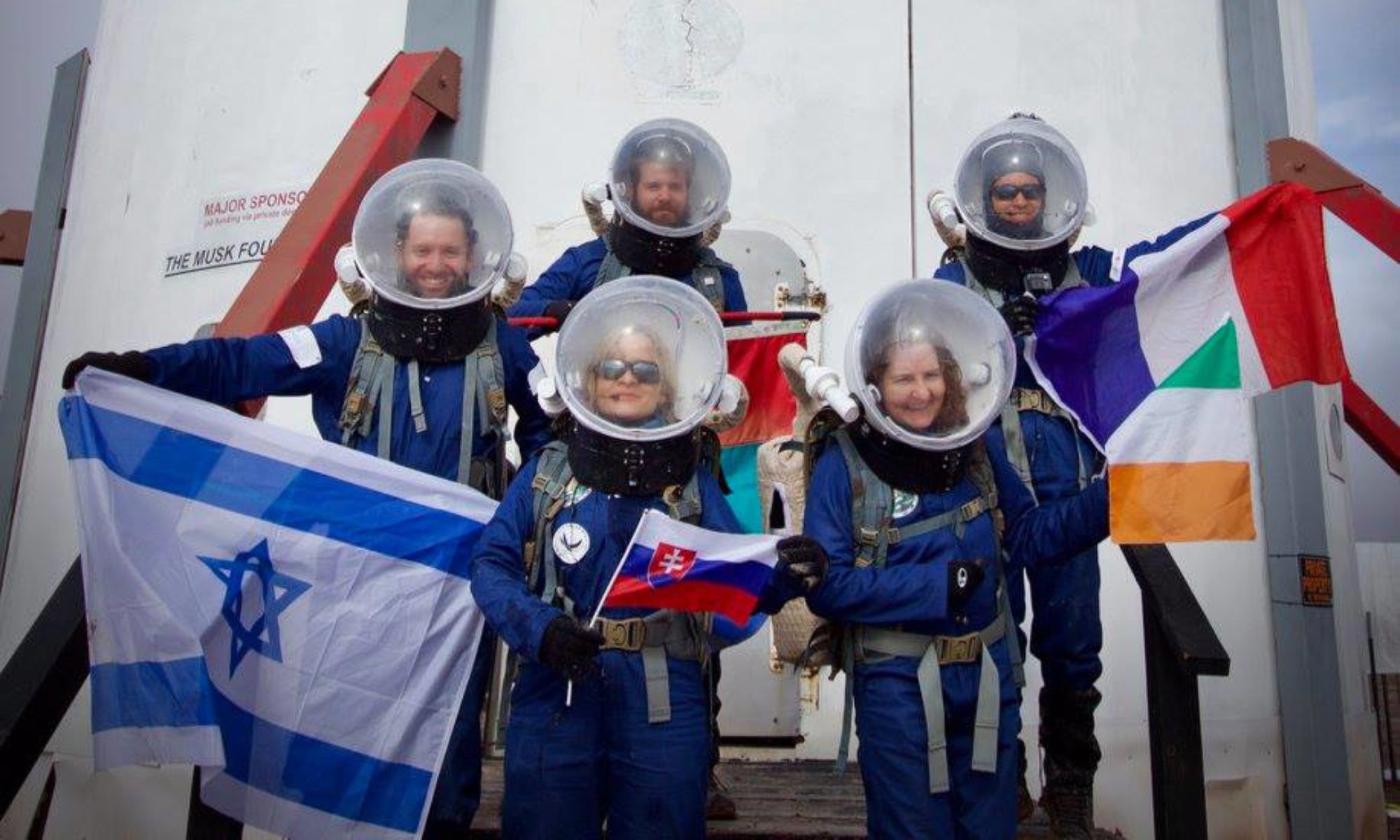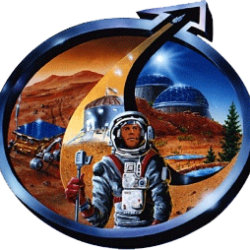Sol 26 – It’s not over until it’s over… but now it’s over!
“’I’ve always wanted to see a Martian,’ said Michael. ‘Where are they, Dad? You promised.’
‘There they are,’ said Dad, and he shifted Michael on his shoulder and pointed straight down.
The Martians were there. Timothy began to shiver.
The Martians were there—in the canal—reflected in the water.”
– Chapter 26 of The Martian Chronicles by Ray Bradbury
Waking up to our last Martian sunrise was the strangest feeling, like ignoring the elephant in the room. We were due to return to Earth today, and staying focused in these circumstances was not easy! Nevertheless, Corentin led us for our final workout session of the mission, and we had breakfast, almost as if today was a normal day.
An EVA crew composed of Quentin, Alexandre, and Corentin then proceeded to perform the last EVA, in order to disassemble and bring back to the Hab all the atmospheric instruments deployed over the course of the mission: the LOAC, the field mill, Purple Air, the weather station, and the Mega Ares antenna. To be ready for any potential issue, Quentin had requested a 4-hour EVA for redundancy, but the crew ended up completing their objectives in under two hours. After a tear-jerking speech by Quentin over the radio and a few last photos with the station as a backdrop, the crew headed back to the station with their trunks full.
Performing my HabCom duties, I was half-listening to what Jérémy and Adrien were discussing while doing the dishes, and one question caught my attention – what if we had made different choices? In the sense: what if our paths had led us elsewhere than to where we are now? The very thought of there being a life in which I would not have lived through this experience threw me off completely, and for the first time, I felt that every choice I had made in my life had contributed to leading me here.
After lunch, we were “surprised” by a second emergency protocol simulation, during which we detected a breach in the GreenHab. Added difficulty: as planned by Quentin and Alexandre, a crewmember pretended to feel ill in the Science Dome during the sensor checks to disrupt the execution of the protocol. Despite it, the breach was sealed in time and the “ill” crewmember was safely returned to the Hab by our Health and Safety Officer. We continued finalizing and “disassembling” our experiments throughout the day; Adrien and Corentin took apart the aquaponic system, but not before they harvested all the greens it had produced! A feast awaits tonight, after we submit our last reports…
It’s amazing how quickly we get used to extraordinary things. Upon arriving at the station a month ago, we were facing our dream, facing what we had worked so hard to attain, and for that reason we felt invincible. Over the past weeks, we have dodged storms, lived under Mars’ atmosphere, played by his rules, encountered obstacles, and sometimes unfavorable odds. It is difficult now to look back and see what we have accomplished: it all still feels part of our day to day, of routine operations, and the tiny steps along the way don’t yet add up to the monumental leap we have taken. But in a little while, perhaps no later than tonight, we will feel even more invincible than on Sol 1: the scientific results we have produced and the friendships we have formed will appear, evidently, before our eyes.
At 5 pm, we opened both airlock doors, feeling the wind on our faces for the first time since we left Earth. If there had been water and canals in the Utah Desert, we might have seen some Martian traits showing through our very Earthly faces, smiling back at us.

